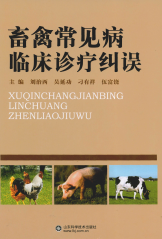
主要责任者: 刘冶西,吴延功,刁有祥等
责任方式: 主编
出版者: 山东科学技术出版社
出版地: 济南
页码: 1-395
开本: 16
中图分类号: S858
装帧: 精
语种:中
定价:70.00
出版时间:2009-01
丛书多卷书否:否
书目简介:本册工具书共收录196条词条。
被引频次:1
| 词条 | 畜禽常见病临床诊疗纠错 |
| 类别 | 中文百科知识 |
| 释义 |  主要责任者: 刘冶西,吴延功,刁有祥等 责任方式: 主编 出版者: 山东科学技术出版社 出版地: 济南 页码: 1-395 开本: 16 中图分类号: S858 装帧: 精 语种:中 定价:70.00 出版时间:2009-01 丛书多卷书否:否 书目简介:本册工具书共收录196条词条。 被引频次:1 |
| 随便看 |
开放百科全书收录579518条英语、德语、日语等多语种百科知识,基本涵盖了大多数领域的百科知识,是一部内容自由、开放的电子版国际百科全书。